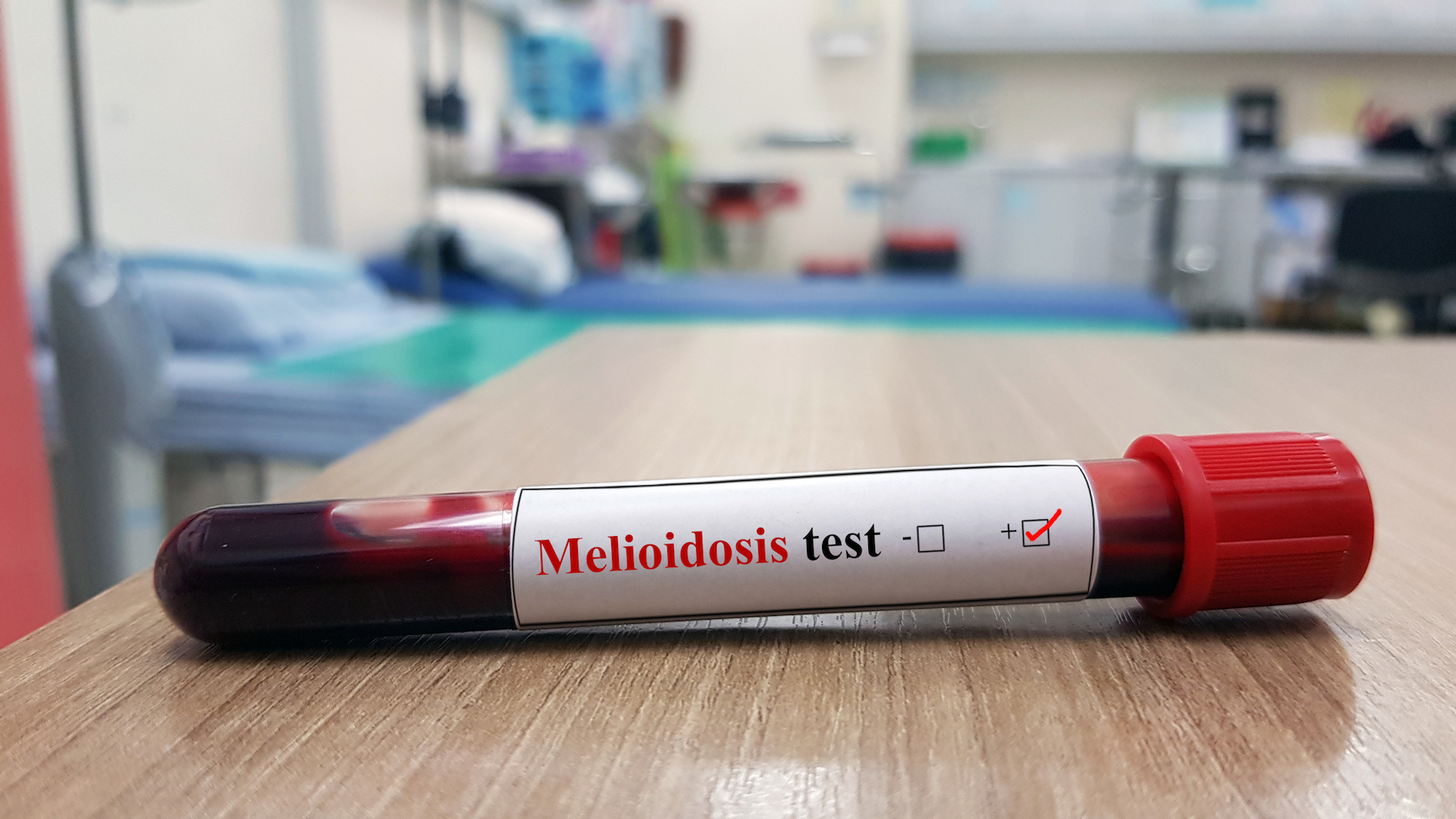What is melioidosis?
Melioidosis is rare in the United States, but four cases between March and July 2021 in four different states, resulting in two deaths, triggered national attention.

Melioidosis is a bacterial infection caused by Burkholderia pseudomallei, a bacterium that lives in soil and water in tropical and subtropical regions of the world. Infection can result in a wide variety of symptoms, from skin ulcers to abscesses on multiple organs, and it may even cause pneumonia. However, some cases are asymptomatic, and an infected person might not even realize they are infected.
About 165,000 cases of melioidosis occur each year, according to a 2016 study in the journal Nature Microbiology. Most cases occur in southeast Asia and northern Australia. Research published in the journal Revista do Instituto de Medicina Tropical de São Paulo in 2006 suggested that melioidosis is an emerging disease in Brazil and neighboring South American countries.
The disease is rare in the United States, however. In fact, it's so rare that the identification of four cases of melioidosis between March and July 2021 in four different states, resulting in two deaths, triggered national attention, according to the Centers for Disease Control and Prevention (CDC). The origins of the infections and the methods of transmission remain a mystery at the time of writing, as investigations are ongoing.
Related: CDC investigating 2 deaths, 2 illnesses from rare bacterial disease
However, most people in the U.S. don't need to worry unless they have recently traveled to or plan to travel to an area where the disease is common, said Dr. Daniel Lucey, an adjunct professor of infectious diseases at Georgetown University in Washington, D.C. "Right now, there's no need to be overly worried," he said.
What causes melioidosis?
Also known as Whitmore's disease, after one of two scientists who first described the infection after recognizing cases of a new septicemic disease in Burma in 1912, melioidosis is caused by direct contact with B. pseudomallei bacteria. It's also possible to contract an infection by inhaling it. These bacteria are typically found in contaminated soil or water in tropical or subtropical regions of the world.
According to the Centers for Disease Prevention and Control (CDC), possible ways that someone could contract an infection from contaminated soil or water include:
- Inhaling contaminated water droplets or bits of dust
- Ingesting contaminated water droplets
- Eating food grown in contaminated soil
- Contact with an open cut or abrasion on the skin
Transmission can also occur between people as a result of contact with blood or bodily fluids, but this is rare. People who live or spend time in regions where the bacteria are common are at elevated risk, but there are other risk factors, too.
"The largest medical risk factor is diabetes," Lucey told Live Science.
A 1999 review of melioidosis case studies, published in the journal Clinical Infectious Diseases, found diabetes to be one of the biggest risk factors for developing severe melioidosis. In general, compared to people without diabetes, people with diabetes tend to be more susceptible to severe bacterial infections, especially infections caused by gram-negative bacteria, such as the species that causes melioidosis.
People with liver, kidney or lung disease are also at higher risk of developing melioidosis if exposed to the bacteria, as are people with cancer and people who are immunodeficient.
Many different types of animals, especially sheep, goats and pigs are also susceptible to infection and can spread the bacterium via their excrement. Animals tend to contract the illness in the same way that people do, by exposure to contaminated water or soil, according to the Government of Western Australia's Department of Primary Industries and Regional Development.
Symptoms of melioidosis
The symptoms of melioidosis generally take between two and four weeks to show up, according to the CDC. However, it may take years before symptoms show up in some people and can appear in just days in others.
Melioidosis can present in a variety of ways, and symptoms depend on where the infection is located. It can be a localized infection that starts with an ulcer or skin abscess in one spot, or it can be a disseminated infection that causes abscesses all over the body, including on organs, joints, bones or the brain.
The most common presentation of the disease is a pulmonary infection, according to the CDC. Infected individuals might develop a mild case of bronchitis, but it's also possible to develop a severe case of pneumonia. Symptoms of a pulmonary infection include cough, high fever, chest pain, headache and anorexia.
It's also possible to contract a bloodstream infection, which often leads to septic shock. People with underlying health conditions such as diabetes are more at risk of contracting this type of infection, which tends to develop rapidly, according to the CDC. Symptoms of a bloodstream infection include joint pain, headache, fever, abdominal pain, respiratory distress and disorientation or confusion.
Diagnosis & treatment of melioidosis
Typically, a doctor might recommend testing if an individual has traveled to an area where the bacteria are common and has since developed symptoms. Lab tests are performed on blood, urine, sputum or the fluid from abscesses and skin lesions to look for the presence of the B. pseudomallei bacteria. Melioidosis can also be diagnosed by detecting a rise in antibodies to the bacteria in a blood sample.
A vaccine is not available for melioidosis, so the emphasis tends to be on prevention. Experts recommend that high-risk people avoid coming into contact with soil or standing water in regions where the bacteria are common.
To treat the infection, experts typically recommend that a person with a confirmed case of melioidosis receives antibiotics intravenously for two weeks. Intravenous treatment is the most effective way to get the antibiotics to the site of the bacteria, Lucey said. At the end of the two weeks, the patient undergoes an assessment to determine if additional treatment, such as another four to six weeks of intravenous antibiotics is warranted. After that concludes, the CDC recommends three to six months of oral antimicrobial therapy.
Many people experience full recovery after treatment, but relapse is possible and would require additional treatment. Relapse is more likely in people who have had severe cases, which tends to occur in people who have defined risk factors, such as diabetes.
Additional resources
- Here are some key facts about melioidosis from the CDC.
- Find more information and helpful resources about melioidosis from the Genetic and Rare Diseases Information Center.
- Learn more about the incidence of melioidosis around the world from The Lancet: Infectious Diseases.
This article is for informational purposes only, and is not meant to offer medical advice.
Sign up for the Live Science daily newsletter now
Get the world’s most fascinating discoveries delivered straight to your inbox.
Jennifer Larson is a contributing writer for Live Science. She has a bachelor’s degree in English from Rhodes College in Memphis, Tennessee, and a master’s degree in journalism from the University of Maryland. She’s a member of the Association of Healthcare Journalists, the Society of Professional Journalists, and the National Association of Science Writers. Her work has appeared in SELF, Parade, Everyday Health, Healthline, and Oncology Nurse Advisor. Jennifer lives with her husband and two sons in Nashville, Tennessee.
Flu: Facts about seasonal influenza and bird flu
What is hantavirus? The rare but deadly respiratory illness spread by rodents











